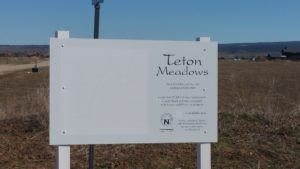 We all read tips and tricks from various real estate blog posts, websites, and other forms of marketing. These can be pricing structures, things to look for in your home inspection, how to negotiate in certain markets, and so on.
We all read tips and tricks from various real estate blog posts, websites, and other forms of marketing. These can be pricing structures, things to look for in your home inspection, how to negotiate in certain markets, and so on.
One bit of advice I don’t see you come up very often is simply being courteous, and easy to work with. I don’t necessarily mean professional, we should always be professional and ethical. I see scenarios come about all the time that could be easily resolved if both parties were easier to work with one another. You don’t have to like the buyer or seller on the other end of the transaction, and I hate to put it this way, but sometimes you just need to act like you do. Sometimes they are likeable. Sometimes it comes naturally, but oftentimes not.
A few examples;
A buyer is looking at a hot home priced right, being shown frequently. The seller takes great pride of ownership, and owns a well-maintained home with trendy furnishings. Knowing that the home will sell quickly, it would be a consideration for the buyer to be appreciative and respectful. Sellers who are attached to their home are more inclined to work with a buyer who they think will appreciate it. Now is not the time to ask for furnishings, or un-ordinary contingencies. I’ve been in several situations where I have written successful transactions simply by watching the way I word things in the contract, and coaching the buyer on things he or she shouldn’t be asking for. In this scenario, the seller could have easily waited for multiple offers or a higher price, but the seller felt comfortable with the buyer whom by all appearances would be a great new owner.
On the seller’s side, being courteous can be advantageous as well. I have had several situations with sellers who have received multiple offers. There have been circumstances where one offer was clearly above the rest, but the seller still felt it necessary to request multiple offers and give a stringent deadline. Now, there are situations where I advise multiple offer situations on behalf of the seller. However, in this circumstance the buyer in particular with the highest and best offer withdrew, “not wanting to get into a bidding war”. In some regards this communication is delivered through the representing agent or broker, so it’s important to express these feelings to the agent to convey to the opposite end of the transaction. Oftentimes a pushy buyer or seller with unreasonable requests will come through in the agents negotiation whether or not that was the intent.
I might be pushing it with this one, but I personally think it helps to have a courteous relationship between an agent and customer or client. Oftentimes buyers want to see everything available on the market whether that’s 3 or 30 homes in their price range. Without a representation agreement with a buyer, an agent holds an element of concern that customer ultimately work with another broker after many hours or days to weeks of time spent. Expressing appreciation and reassurance is an excellent tool to help that buyer agent relationship and also insure that agent will continue to work diligently on behalf of the customer. The same goes for the seller. I have seen several instances where sellers are clearly the market experts, (Isay this sarcastically) even more so than the agent. They can demand unreasonable marketing requests that will not perform, and are not interested in hearing that agent’s opinion of those marketing avenues. Being appreciative of efforts that agent is making, and even making suggestions can instill not only confidence, but an element of drive to complete the task diligently.
We all know what it means when an agent is ethical, but not necessarily courteous to the public. It can damage that agents reputation, and pocketbook. It is however often overlooked on the opposite end of the spectrum.

 If any of you read the local paper, or follow social media etc. here in Teton Valley, you probably remember the drama with a Condo Homeowner’s Association in Driggs, ID that made the decision to require landowners and property managers to restrict long-term rentals (longer than 30 days) to “single family” use. That association later defined single family as:
If any of you read the local paper, or follow social media etc. here in Teton Valley, you probably remember the drama with a Condo Homeowner’s Association in Driggs, ID that made the decision to require landowners and property managers to restrict long-term rentals (longer than 30 days) to “single family” use. That association later defined single family as: I was posting a few signs last week, and noticed an old (2007 or so) subdivision sign at Teton Meadows. In a way, it’s a testament of where prices once were. If you can’t read it, it says “Lots Starting at $265,000”. Yes, those were the old days. The height of the market, just before the bubble.
I was posting a few signs last week, and noticed an old (2007 or so) subdivision sign at Teton Meadows. In a way, it’s a testament of where prices once were. If you can’t read it, it says “Lots Starting at $265,000”. Yes, those were the old days. The height of the market, just before the bubble.